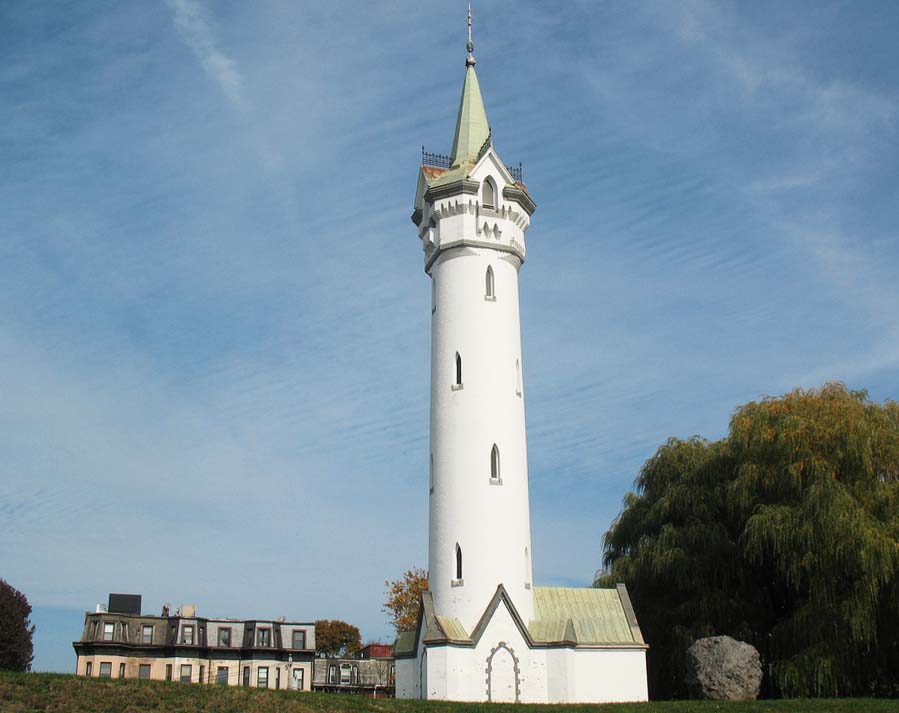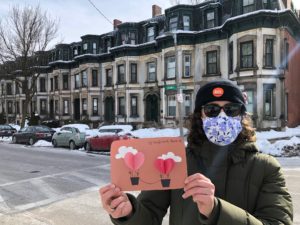
March 17, 2022 Roxbury’s Highland Park Considered for New Conservation District
Unlike the historic neighborhoods of Beacon Hill, the South End and Bay Village, the rich historic resources of Roxbury’s Highland Park are not protected for preservation. However, that could change as the neighborhood and the City of Boston’s Landmarks Commission conclude a 60-day public comment period on a study of the district’s historic resources, and will hold a public meeting on April 12, 2022 to help decide whether it will be.
The current process considers whether the neighborhood should be designated an Architectural Conservation District (ACD), under the auspices of the Landmarks Commission, offering some level of protection to the neighborhood’s historic character and buildings. A study committee made up of six volunteer residents and the members of the Landmarks Commission have worked for a year on this highly detailed report exploring and describing Highland Park. The study was authorized pursuant to a petition submitted by 500 neighborhood residents to the Landmarks Commission requesting consideration for some level of preservation through an historic district.
An earlier petition to designate a historic district in this neighborhood, submitted to the Landmarks Commission in 1994, never gathered momentum. However, interest emerged in recent years from a community concerned about increased threats to the neighborhood’s historic character due to demolition requests and inappropriate development. Residents are also concerned that the history and places of significance to the long time Black community are not sufficiently known or considered in the process of evaluating development entering the neighborhood. The recent study report calls out the neighborhoods physical and demographic changes, and provides important analysis of the neighborhoods latter-20th century history, highlighting people and places for their important associations with civil rights, black culture and faith.
Highland Park’s renewed interest in an Architectural Conservation District – different from a full Boston Landmark District like Beacon Hill, the South End or Back Bay—emerged in 2017, when a neighborhood group cited the 1994 petition and asked the Landmarks Commission to speed things up the process to designation.
According to the Boston Landmarks Commission, the purpose of designation for an Architectural Conservation District is to “Preserve and prevent the demolition of buildings that contribute to the character of the district …, [p]rotect and enhance the unique character of the quality of this environment, specifically with regard to public view corridors, parks, open space, and streetscapes, and [e]ncourage new construction and infill development that is compatible with the goals of the district… .”
The draft Study Report shows that there are various levels of protection that could be chosen for the designated district. The study committee emphasizes that, while it is important to retain the neighborhood’s character and historical memory, it is also important to recognize that that history is rich largely because it did change over time – demographically, architecturally and otherwise. Highland Park will and should will continue to change, so the limits that are imposed should recognize that it’s best if they’re not overly burdensome or restrictive to residents going forward.
The boundaries of the Highland Park district were proposed in January 2020 and with some adjustments were then agreed to. They are much like the boundaries of the Roxbury Highlands Historic District listed on the National Register of Historic Places in 1989.

“The purpose of such a designation is to recognize and to protect the ‘physical features or improvements’ that are of ‘historical, social, cultural, architectural, or aesthetic importance to the city and cause such area to constitute a distinctive section of the city’,” the report said. The Highland Park Study Committee voted on Jan. 27, 2022, to accept the Study Report as prepared and submit it to the Landmarks Commission.
Not surprisingly, the study committee concluded that the proposed district “has a significant presence of features and improvements that are important for their historic, social, cultural, architectural and aesthetic significance.”
Why?
The built environment is a significant part of it. HBI is especially proud of its projects within Highland Park, including some combination rehabilitation and renovation and restoration of the 1834 Alvah Kittredge House, 1870s Alvah Kittredge Park rowhouses, the Cedar Street Marble Rowhouses, the 1785 Spooner-Lambert House, and a comprehensive assessment of First Church of Roxbury. HBI purchased the 1910 St. James African Orthodox Church at 50 Cedar Street in 2019 when it was threatened with demolition. HBI also fully restored the 1859 Eustis Street Fire House in Nubian Square, which served as our headquarters from 2011 until 2021, before we moved to the Old Corner Bookstore last year.

More broadly, the report found that the neighborhood is worth protecting because it is the location of “numerous events and sites that are important to the social, cultural, and military history of the Native population; the people of Roxbury and the city of Boston; the Commonwealth of Massachusetts; and the United States.”
The district contains a Revolutionary era fortification (Fort Hill) and an early element of Boston’s first water delivery system (the Fort Hill Standpipe). Famous people who lived in Highland Park and whose houses and workspaces survive, include abolitionist William Lloyd Garrison, author Edward Everett Hale, architects Nathaniel J. Bradlee and Richard Bond and, more recently, filmmaker Henry Hampton, who produced the seminal documentary on the American Civil Rights Movement, Eyes on the Prize.
Beyond the varied architectural styles and the big names, the study report states th
at “the district is socially significant as a location in which truly diverse groups have made their homes side by side. Rather than representing a single focus of significance, the many representatives of different social groups have produced a rich fabric of many styles of dwelling mixed together with places of worship and some places of business.
“The neighborhood is valuable as a palimpsest of all these different agendas,” the report says, including those of Native Americans, early colonial settlers, immigrants from across Europe and later from Africa, Central America, the Caribbean, and other places.”

Besides Revolutionary soldiers, wealthy urban dwellers with lots of space, residents of denser mass housing, abolitionists and the faithful, and evidence of philanthropy, like the Roxbury Alms House, there was the later black community including “the powerful agenda of groups such as the Roxbury Action Program (RAP) that fought racism and poverty.” Notably, the Lyman Family commune and a gay collective inhabited different parts of Highland Park.
The study report covers not only the social and cultural history and the built environment but also the natural setting and important place of Roxbury Puddingstone in the neighborhood’s geography and as an important building material throughout the neighborhood. “The whole area is set dramatically on a rocky hill that is steep in places, and builders have taken advantage of the topography to achieve unique views as well as surprising proximities, with old retaining walls holding structures perched on ledges far above their immediate neighbors,” the Study Report notes.
HBI congratulates the neighborhood and thanks the members of the study commission for their hard work and all the valuable and informative detail they gathered for this study. We are excited about this long overlooked opportunity to preserve the best of Roxbury’s Highland Park neighborhood.
You can review and submit comments on the study report here.
###



